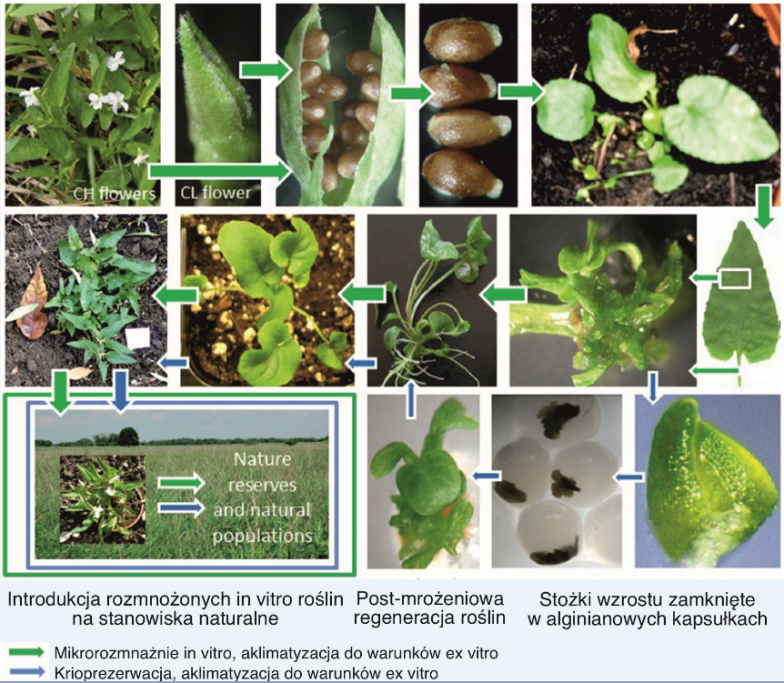The PAS Botanical Garden's Plant Biotechnology and Micropropagation team has developed an effective method for protecting the wetland violet - a rare and endangered representative of the Polish flora.
Methods of plant propagation using sterile in vitro culture conditions combined with introduction of plant tissue fragments into liquid nitrogen (-196o(C) are now being used on a large scale in gene banks to collect useful species. They complement traditional ways of preserving plant diversity that cannot be stored as seeds. However, rare species from natural sites are more demanding and usually need individual treatment. Therefore, the development of an effective method for collecting wetland violet tissues in liquid nitrogen (Viola stagnina Kit.) is a source of satisfaction for us. This task was one of the goals of several years of research conducted by Dr. Piotr Żabicki, a PhD student from the Department of Plant Cytology and Embryology at Jagiellonian University. At our Botanical Garden, he learned tissue cryopreservation techniques and performed experimental research on developing the most suitable cryopreservation procedure for this species.
The study tested the effectiveness of different cryopreservation techniques (encapsulation/dehydration, encapsulation/vitrification and droplet method) for different sizes of growth cones taken from shoots of plants growing in vitro culture. The encapsulation/dehydration method, which involves dehydration (osmotic and air) of plant fragments (0.5-1 mm in size) enclosed in alginate capsules, resulted in the highest survival rate and efficiency of plant reconstitution from thawed tissues. Plants reconstituted after cryopreservation were subjected to molecular analyses, which confirmed the genetic similarity of the obtained individuals with the starting plant (growing in nature).
This is the world's first protocol for the long-term and safe storage and subsequent efficient multiplication of wetland violet plants in in vitro culture. It can be successfully used in a gene bank, and the resulting plants can feed poor natural sites or create replacement sites.
The diagram illustrates the successive stages of the propagation and preservation procedure Viola stagnina. These include:
- upper set of photos - taking seeds from plants growing in the natural stand, and then from the germinated seeds obtaining individuals that are the source of experimental material;
- The middle set of photos (from left) - introduction of leaf fragments into sterile conditions of in vitro culture, multiplication of plants, their regeneration and acclimatization to ex vitro conditions;
- The lower set of images (from left) - encapsulation of excised growth cones in alginate capsules, which after introduction into liquid nitrogen (-196oC) can be stored under these conditions indefinitely. From thawed growth cones, plants are reconstituted in vitro culture, which, after acclimatization, can be exhibited in the botanical garden or planted in natural or replacement sites.
Publication title:
Żabicki P, Mikuła A, Sliwinska E, Migdałek G, Nobis A, Żabicka J, Kuta E 2021 Successful cryopreservation and post-thawing regeneration of wet habitat, endangered violet - a useful tool in ex situ conservation. Scientia Horticulturae 284, 110056 https://doi.org/10.1016/j.scienta.2021.110056
post
post
2021-04-02 10:30:58



